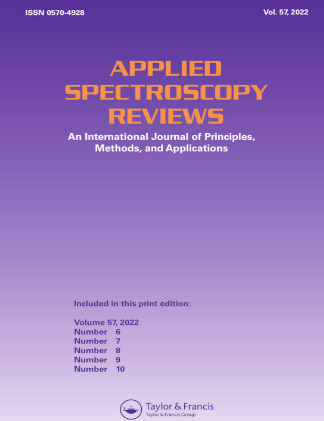Surface-enhanced Raman scattering (SERS) spectroscopy of corrosion inhibitors: High-resolution detection, adsorption property, and inhibition mechanism
IF 5.4
2区 化学
Q1 INSTRUMENTS & INSTRUMENTATION
引用次数: 1
Abstract
Abstract Corrosion inhibitors are widely employed to retard metal corrosion. Highly sensitive detection and adsorption mechanism analysis are the two important aspects for the systematic research of corrosion inhibitors. Surface-enhanced Raman scattering (SERS) spectroscopy has emerged as a promising tool for the high-resolution detection and inhibition mechanism analysis of corrosion inhibitors in recent decades, and is of considerable importance for their selection and optimization. This paper provides an overview of the SERS technique in the study of corrosion inhibitors adsorbed on noble metals (SERS active substrates) and transition metals (non-SERS active substrates). After surface roughening, the SERS enhancement of metal electrodes can be significantly improved, which intensifies the Raman signals of adsorbed inhibitors to provide sufficient information regarding the binding state and adsorption orientation. In addition to roughening the metal surface to obtain strong SERS signals, novel SERS sensors that can amplify the Raman signals of inhibitors regardless of the type or surface state of the metal substrates are introduced, which is conductive to facilitating the real-time detection of inhibitors. The challenges and future prospects of SERS technique in corrosion inhibitor research are discussed. In summary, SERS technique is expected to promote the research development and engineering applications of corrosion inhibitors.缓蚀剂的表面增强拉曼散射(SERS)光谱:高分辨率检测、吸附性能和缓蚀机理
本文章由计算机程序翻译,如有差异,请以英文原文为准。
求助全文
约1分钟内获得全文
求助全文
来源期刊

Applied Spectroscopy Reviews
工程技术-光谱学
CiteScore
13.80
自引率
1.60%
发文量
23
审稿时长
1 months
期刊介绍:
Applied Spectroscopy Reviews provides the latest information on the principles, methods, and applications of all the diverse branches of spectroscopy, from X-ray, infrared, Raman, atomic absorption, and ESR to microwave, mass, NQR, NMR, and ICP. This international, single-source journal presents discussions that relate physical concepts to chemical applications for chemists, physicists, and other scientists using spectroscopic techniques.
 求助内容:
求助内容: 应助结果提醒方式:
应助结果提醒方式:


